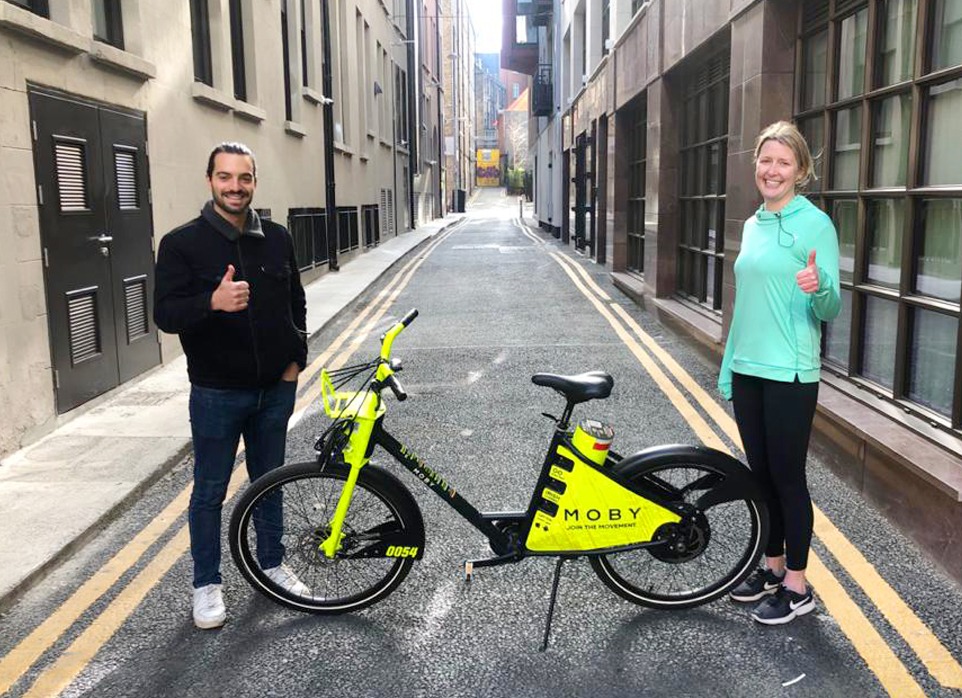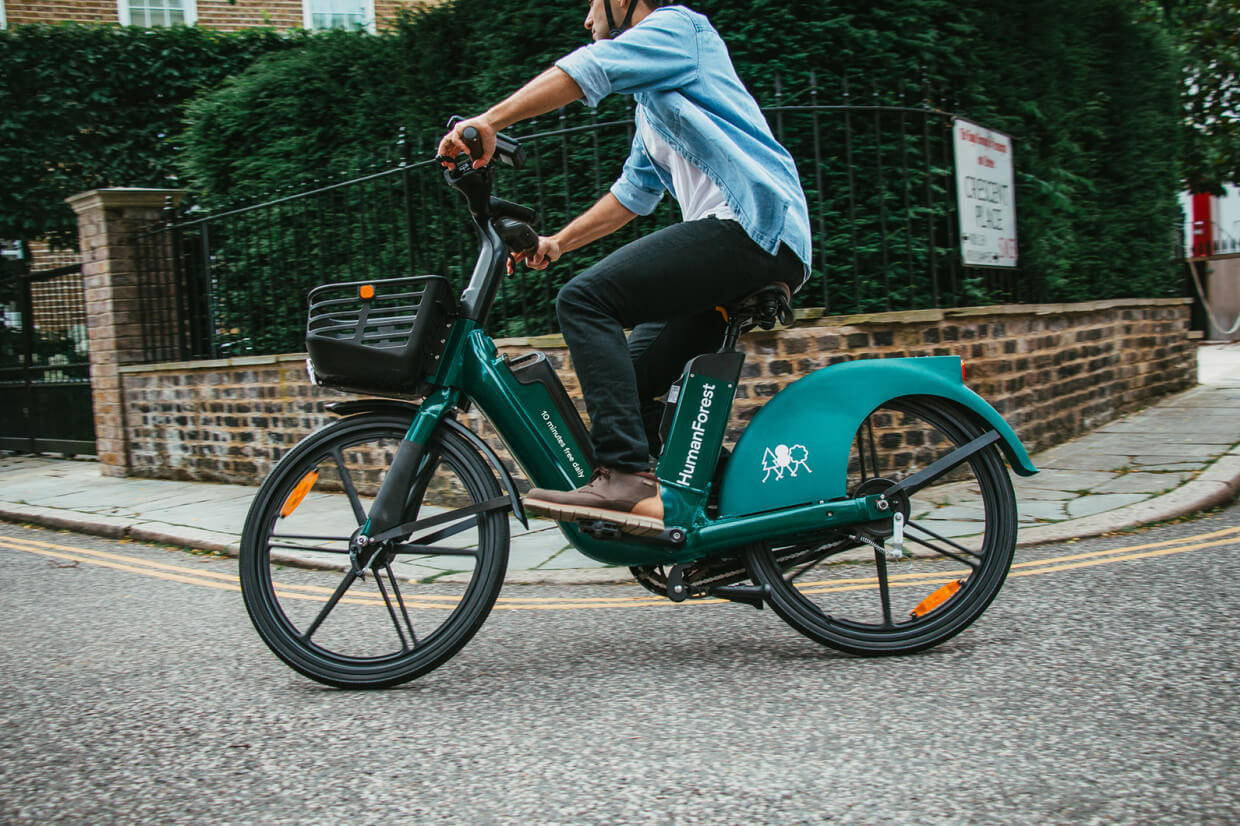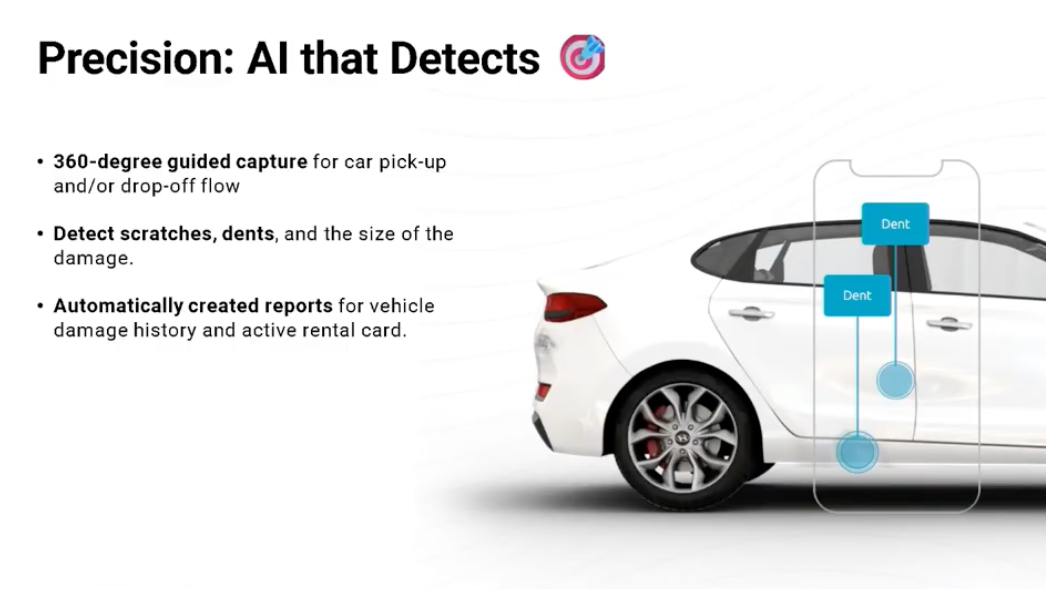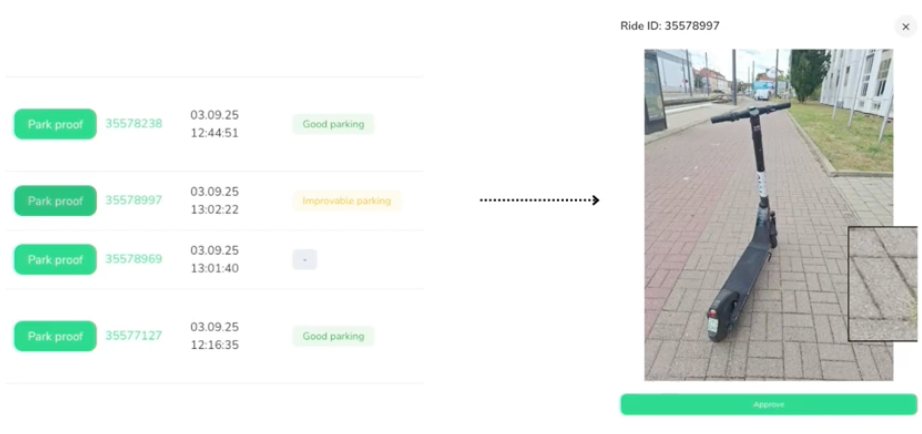
If you have decided to launch your vehicle sharing business using existing software, without developing it from scratch, this article will help you to understand what software features you could seek and ask for.
The sharing business is growing worldwide, as is the number of sharing app providers. At ATOM Mobility from time to time we meet clients who are already using some platform, but are not totally happy with it. Moreover they don't know about the multitude of built-in features that they can have at no extra cost. So let's look at some default as well as “nice to have” features that the best sharing software solutions must have.
Starting the ride
There are several options to start the ride, so the software should be adjustable for all options. It is possible to put a QR code on the vehicle so that the code can be scanned through the app by the user. For the software it means that there should be a functionality in the app that allows the QR code to be scanned, finding the particular vehicle, and allowing the user to drive it as well as letting the system and others know that this vehicle is not currently available.
Another option for the user to start the ride is by clicking the button on the app, thus unlocking it. This function is especially popular in car and moped sharing. The app should link the particular user to the vehicle and the software should allow the ride. Despite the fact that QR codes are more popular, at ATOM we invite our customers to think it over. Unlocking via the app can sometimes be a more reliable choice because QR codes could be broken or not fully visible. In addition, users could have issues with their cameras, so why not start the ride with just one click?
Although it is not very popular, some vehicle sharing companies still offer users the option of making a reservation for the vehicle. In this case, software should do all the jobs - the user identifies the vehicle on the map, makes the reservation, and the vehicle should then wait for this particular user, who scans the QR code or pushes the button when he is ready for the ride. This functionality of keeping the vehicle for a particular time and later offering it to another user should also be automatically managed by the software.
Another challenge is how to avoid the problem of users who missed the previous ride making a reservation for the next ride? And what happens if the same user doesn't show up two times in a row? These limitations on reservations should also be directly available on the platform.
And what happens if a user starts using a vehicle other than the one that was reserved for him? The possibility that this might occur is low, but still should be tested.
Connectivity and tracking the vehicle
Connection to IoT lies on two shoulders – the IoT device that is on the vehicle and the software. It is crucial for you and the operators to always know where the vehicle is located and what its current status is. The software should provide the opportunity to track vehicles and obtain overall information about driving speed, acceleration, and errors. It should also have system alerts in case something happens; for example, someone tries to steal the vehicle or a rider drives outside the parking zone.
Remember that every vehicle makes money for your business every minute that it spends on the street. If something is wrong, then it is in your best interest to know this as soon as possible, as well as to locate the vehicle and dispatch the service team to conduct a check-up. Additionally, if you take care of the fleet and keep it in good condition, malfunctioning risks and additional costs in long term are going to be minimized.
ATOM Mobility software currently supports Segway, Teltonika, Acton, Omni, Okai, Fitrider, Freego, Zimo, Comodule, Hongji, Yadea and Niu IoT devices. Existing integrations allow ATOM Mobility customers to quickly scale the fleet, test and add new vehicle models, and not be limited to their plans. Of course, it is also possible to do custom integrations upon request.
Everything revolves around payments and preventing fraud
Before having anything to do with the user, it is crucial to identify him. In some countries, it is even mandatory, including for scooter and bike-sharing services. But it is also important for your own safety. ATOM Mobility has recently started to collaborate with Veriff – an API solution that allows any website and mobile application to match a person with their government-issued ID. So if the vehicle sharing service provider is using ATOM Mobility software, Veriff's API will directly enable integration of verification processes into mobile apps. It takes less than 2 minutes for Veriff to automatically verify the document. ATOM Mobility supports also other ID verification tools such as Sumsub. However, it is vital to make sure that the tool is robust, offers a good user experience, and is automated and lightning fast before integrating it.
By the way, user experience is very important not only concerning identification, payments, or other separate features but also in regard to the overall convenience of using the platform. Players in the vehicle-sharing business fight for conversions. And this can mean a lot in terms of money. For example, if the software has a conversion rate of 20% on average, then registration for the first ride from 100,000 clients reached will bring less than EUR 225,000 in turnover per month compared to the company that has an average conversion rate of 50%.
When it comes to payments, nowadays there are a lot of payment providers that can be integrated with sharing mobility software. Before choosing one, it is crucial to collect feedback and make sure that integration has a convenient user interface, it is safe and the service provider is stable, i.e. there won't be any significant disruptions. ATOM Mobility clients usually use the most popular global payment providers such as Stripe, Adyen, Paypal and Klarna. In some cases, local payment providers are needed due to legal restrictions, for example, in Saudi Arabia we partner with Hyperpay and in Ukraine, we partner with Concord. So integration with these payment providers is already set up within ATOM Mobility software. Of course, custom integrations can also be done and additional service providers added.
After the payment has been made and the ride has been completed, the invoice should be delivered straight to the user's e-mail box and also made available through the customer profile on the app. For brand awareness and user convenience, it is good that the software is able to personalize the invoice by adding logo and other company details. You can probably even add promotional messages for the next ride. And you should check whether an e-invoice delivered straight to the e-mail address is mandatory, because in some countries it is.
Of course, the most valuable client for the company is one, who makes recurring payments and rides more than once. Recently major players in the field have announced subscription services. In May 2021 Lime rolled out the monthly subscription service Lime Prime. In contrast, Bird offers a monthly fee rent their scooters. The best fleet sharing software has subscription functionality available, so you should definitely consider using it also for your business.
Access through the dashboard and the most advanced features
All the information and functionality mentioned above and a lot more should be accessible through the dashboard available, together with the software and the app. Every employee of the company involved in the vehicle sharing organization process should have convenient access to it from any available device. However, there should be an opportunity to regulate which user has access to what features - different reasons, not every team member needs full access to the dashboard.
Usually, the dashboard helps to manage the fleet, rides, and customers. For the convenience of data analysis, the dashboard should have reporting and data exporting capabilities. An additional feature that you definitely need to look for is heatmaps and rebalancing suggestions, which will help you to plan your fleet and the location of your vehicles by predicting the busiest areas in the city, where vehicles are in the highest demand during certain hours of the day. This functionality is automatically also available through the best software.
Private fleets and working with corporates
And last but not least. Sometimes there is an opportunity to make at least part of your fleet private. This is a corporate and private sharing scheme. In corporate sharing schemes, for example, you can offer part of your fleet to some large company, so this company’s employees have exclusive access to this fleet. In private sharing schemes, you can grant exclusive access to the vehicles to residents of a specific hotel or building. There are many other options available, but the main message is that even this functionality is integrated into the best fleet sharing software, so choose your software partner carefully and wisely.
Software reliability
None of the features discussed here matter if you don’t have an appropriate platform. The biggest complaints from the end users that sharing businesses receive concern the instability of the platform. So always remember to start by checking SLA. It is the indicator of stability that shows the number of minutes during the month that the system experienced some problems. The platform should have indicator of 99.5% -99.9%. If the SLA is lower, all other features don’t make sense as you will definitely received a lot of complaints from the user that something is not working. If you have any additional questions or are interested in integrating some custom features, contact the ATOM Mobility team to find out more. We are one of the biggest and one of the most experienced players in the market.
Click below to learn more or request a demo.

🚗📲 Whether you're renting out cars, bikes or scooters, the best rental businesses in 2025 are fully digital. No more paper contracts or office keys – just tap, unlock, and go. In our latest article, we explore top apps (like Donkey Republic, MOBY Bikes and Forest) that show what a modern rental experience looks like. Plus, we explain where a full platform like ATOM Mobility fits in when you're ready to scale.
Running a rental or sharing business today means delivering a smooth, digital-first experience. Whether you rent cars, bikes, scooters or other vehicles – users expect to book online, pay, verify identity if needed, unlock a vehicle, and ride or drive without extra friction.
To make that happen reliably, you need good vehicle rental software or platform backing your service. Below are some successful examples of apps and platforms that show how this works and what is possible.
Donkey Republic
Operates in several European cities offering shared bikes and e‑bikes. Users find a bike in the app, unlock it with a smartphone, ride, then park at a designated drop‑off spot and end the rental. Pay‑as‑you‑go, daily rates or memberships are all handled via the app.
MOBY Bikes
Targets electric bicycles and e‑cargo bikes across certain regions, with a “tap‑and‑ride” system that uses its proprietary app for booking, unlocking, and rental management. The platform supports mixed-use fleets (shared bikes, cargo bikes, delivery fleet, even B2B rentals), which illustrates flexibility – useful for operators exploring different business models beyond simple consumer rentals.

Forest
It is a dockless e‑bike sharing operator in London. It runs a large fleet and offers bike‑sharing through a mobile app. The service demonstrates how a relatively simple, dockless rental model can scale at urban level using app‑based rentals, unlocking, and flexible parking.

These examples show how micromobility‑focused services already rely on booking, payment, unlocking and fleet management tech – the same core capabilities needed by any modern vehicle rental business.
What makes these apps work – and what to borrow from them
From these operators you can observe several useful traits that a good rental/sharing software should provide:
- Seamless user journey: crate account in seconds → search → book → unlock → ride/drive → return. Users don’t need paper contracts or to meet staff to get a vehicle.
- Flexible pricing & rental models: per-minute, hourly, daily, subscription, memberships – enables both occasional users and frequent commuters.
- Smart access control and vehicle tracking: unlocking via app or smart lock, GPS tracking, drop‑off in defined zones or docking stations, helps maintain order, reduce theft, and support dockless models.
- Support for different vehicle types: from bikes to e‑bikes and cargo bikes – showing that underlying software can be agnostic to vehicle type, useful if you plan a mixed fleet.
- Scalable fleet operations and maintenance: availability updates, booking history, maintenance logs, geofencing or parking zones – these help manage many vehicles across zones without chaos.
These are exactly the kinds of features you need when you move from small‑scale operation to proper fleet business.
Why to choose ATOM Mobility
If you plan to just test the market or to operate a larger and more complex fleet - multiple vehicle types, multiple cities, or advanced operational requirements - a full-stack platform like ATOM Mobility becomes essential.
ATOM Mobility is designed for operators who need full control over the entire mobility operation: booking flows, unlocking logic, payments, KYC/ID verification, backend administration, fleet analytics, dynamic pricing, and multi-modal rentals across cars, scooters, bikes, and more.
The platform provides a unified backend that supports cars, scooters, e-bikes, mopeds, and additional vehicle types within a single system. Operators can manage bookings, payments, users, smart locks or connected vehicles, fleet health, and city-level scaling without fragmenting their tech stack as the business grows.
This approach offers far greater flexibility than single-vehicle or bike-only solutions and removes the need to migrate systems when expanding into new vehicle categories or markets. Check out the full service here.
How to choose: when to use franchising vs full platform
Join a franchising when you:
- prefer operating under an established brand
- value a clear operational playbook and central support
- want simpler marketing thanks to brand recognition
- are comfortable with limited control over technology and product decisions
- accept franchise fees or revenue sharing in exchange for convenience
- don’t need heavy customization or experimentation
Use a full platform (like ATOM Mobility) when you:
- aim to manage a larger, mixed fleet (cars, scooters, bikes, e-bikes)
- need full backend control (admin, analytics, pricing, reporting)
- require payments, KYC/ID verification, and automation built in
- want freedom to customize booking flows, pricing, and partnerships
- plan to scale across cities or add new vehicle types over time
- prioritise brand ownership and customer relationship control
- want no revenue sharing or franchise fees
There isn’t a one‑size‑fits‑all solution
For simple bike or e-bike fleets, the technology barrier is already low. Joining a franchise can be a fast way to get operations running with minimal setup.
However, operators with long-term ambitions - expanding into multiple vehicle types, scaling across locations, or maintaining consistent service quality - typically outgrow narrow tools. In those cases, a full-stack platform like ATOM Mobility offers the flexibility and control needed to support growth without rebuilding the tech foundation later.
Some operators start small and migrate as complexity increases. Others choose to build on a full platform from day one to avoid future transitions. The right choice depends on how clearly you define your growth path, desired level of control, and operational complexity from the start.

📱AI in shared mobility isn’t a future trend – it’s already here, and for good. From detecting car damage to forecasting demand and verifying parking in real time, operators are using AI to reduce manual work and run more efficient fleets. In this new article, we break down 3 real use cases already live on the ATOM Mobility platform: 👁️ Vision AI, 🔍 Precision AI, 📊 Prediction AI. See how AI is changing shared mobility, and how you can start using it now.
Artificial intelligence is no longer just a trend in mobility. For modern vehicle sharing and rental services, AI is already solving real operational problems and unlocking new ways to grow. At ATOM Mobility, several AI-powered features have already been implemented into live products and tested by operators across Europe.

This article shares three real-world AI use cases that are already helping operators reduce manual work, improve asset control, and better match vehicle availability to demand.
1. Vision AI: Camera-based parking control for micromobility
Micromobility parking continues to be a challenge in cities where dockless vehicles can end up blocking sidewalks, crossings or entrances. Manual checks are costly and often too slow to solve the problem in real time.
ATOM Mobility now uses computer vision to solve this. With Vision AI, riders take a photo when ending their ride. The system analyses the image using a neural network to understand if the vehicle is parked correctly – within a designated zone and without creating obstructions. If not, the app notifies the user and prevents trip completion until the parking is corrected.Each parking photo is automatically tagged as “Good parking”, “Improvable parking” (the user receives guidance on how to improve the parking), or “Bad parking” (the user is asked to re-park).
If the user fails to submit a “Good parking” photo after several attempts, the system will accept the photo with its current tag (“Improvable” or “Bad parking”) and flag it in the dashboard for further customer support review.
This solution has been live with many operators already. It helps reduce complaints, improve compliance with city regulations, and lowers the need for manual reviews.

2. Precision AI: Detecting car rental damages with cameras and machine learning
In traditional car rental, damage inspection is slow, manual, and often inconsistent. With self-service rentals becoming more popular, operators need a smarter and faster way to verify a vehicle’s condition between trips.
ATOM Mobility has integrated AI-powered damage detection using computer vision. Customers scan the vehicle at pick-up and drop-off. The app compares images and flags scratches, dents, or other visible damage with high accuracy. This allows operators to quickly assess responsibility and reduce disputes.
The system helps protect the fleet, lowers repair costs, and adds trust for both users and operators. It’s especially useful for car sharing and self-service rental models where physical handovers are skipped.
3. Prediction AI: Forecasting demand and automating vehicle relocation
One of the biggest cost factors in shared mobility is rebalancing the fleet. If scooters or cars are idle in the wrong location, revenue is lost. At the same time, relocating vehicles manually is expensive and not always efficient.
ATOM’s AI models use historical trip data, usage trends and contextual signals (such as day of the week or weather) to forecast demand and suggest the best relocation zones. This gives operators a map of where and when to move vehicles – improving utilisation and saving time.
The system can even be combined with automated relocation logic, where users are incentivised to park in high-demand areas. This shifts part of the rebalancing cost from operators to riders and keeps the fleet productive.
Why this matters now
AI tools are finally reaching the stage where they can operate reliably, even in complex environments like cities. These examples are not abstract ideas or lab tests. They’re active features helping ourcustomers run leaner, smarter fleets today.
For micromobility operators, Vision AI reduces complaints and ensures regulatory compliance. For car rental providers, Precision AI saves hours of staff time and improves trust. And for both, Prediction AI improves margins by making sure vehicles are where users need them.
What’s up next?
These are just the first steps. AI in mobility will continue to expand with smarter pricing engines, voice-based support, predictive maintenance, and more. But the examples above already prove that even small AI integrations can bring major improvements.
At ATOM Mobility, we continue building these tools directly into our platform so that operators don’t need to develop them in-house. If you want to see how these AI-powered features work in action, get in touch with our team.
AI in shared mobility is not about replacing people. It’s about giving operators better tools to run faster, smarter, and more efficient services.


